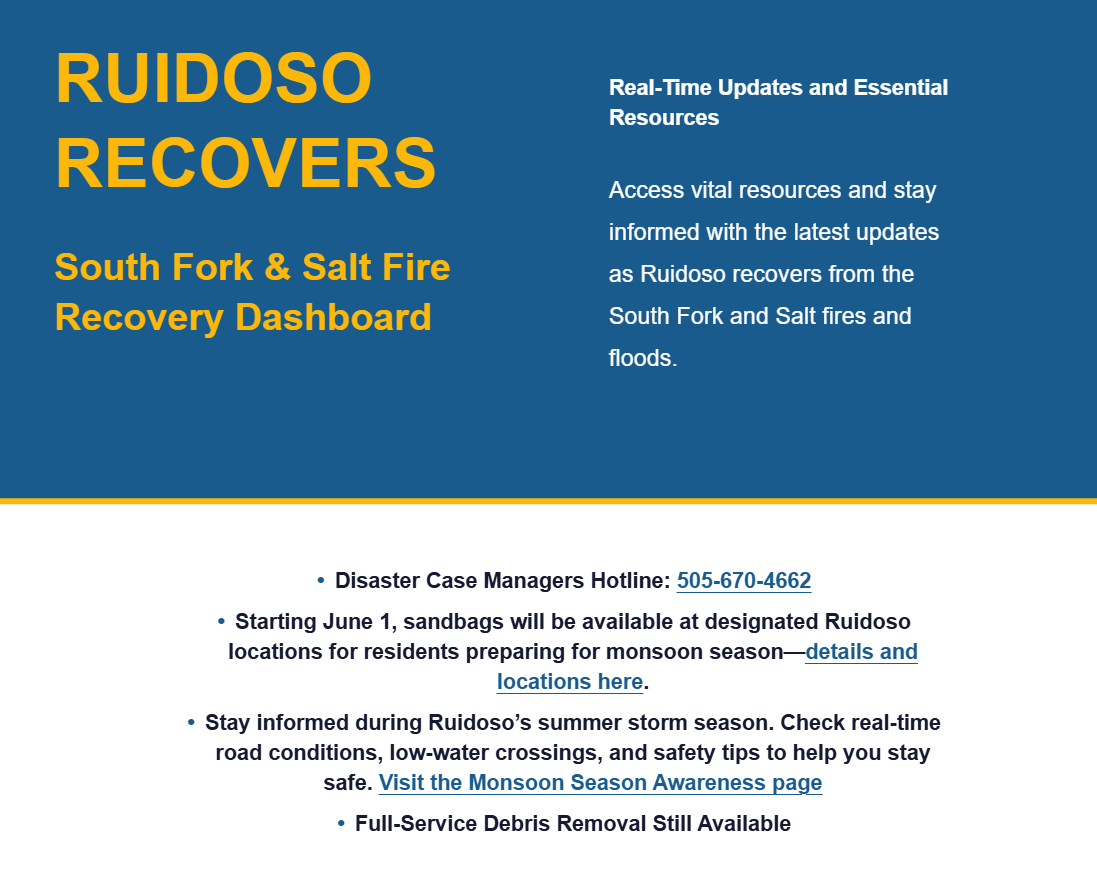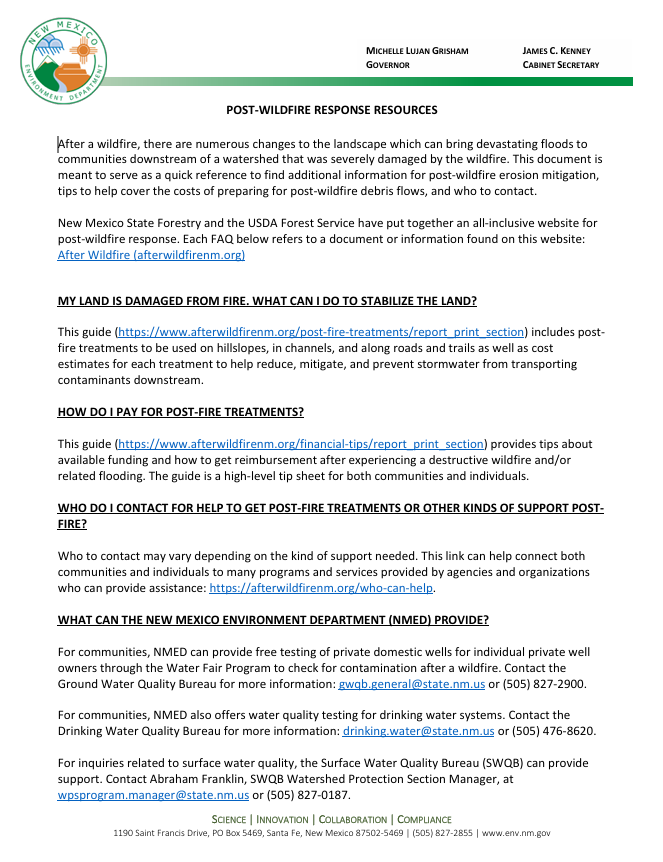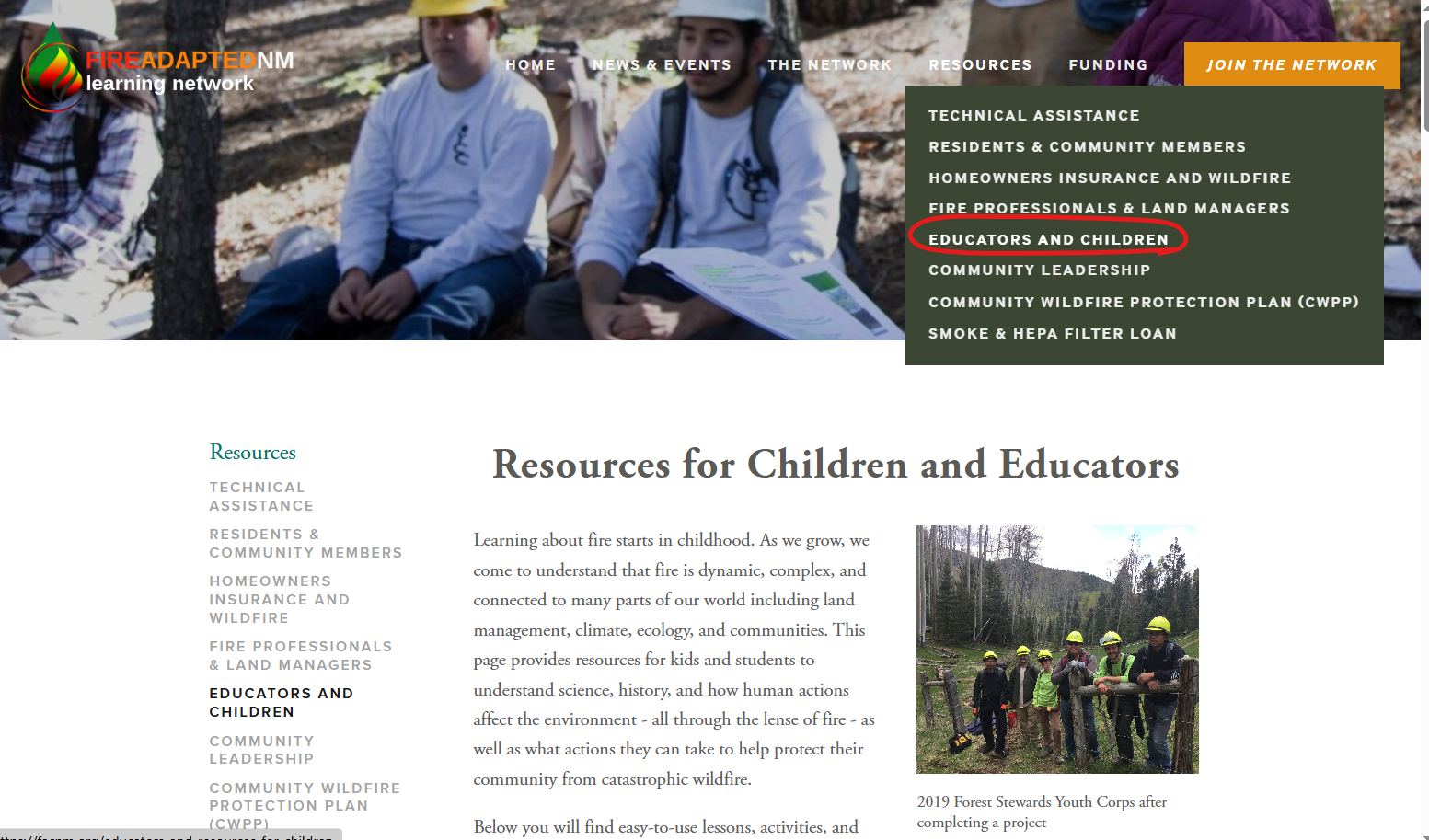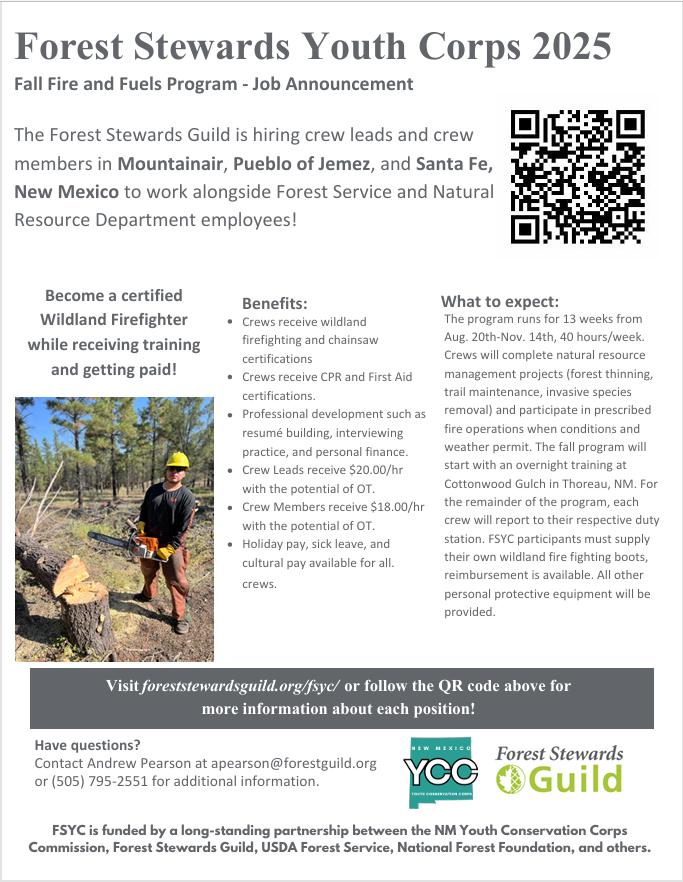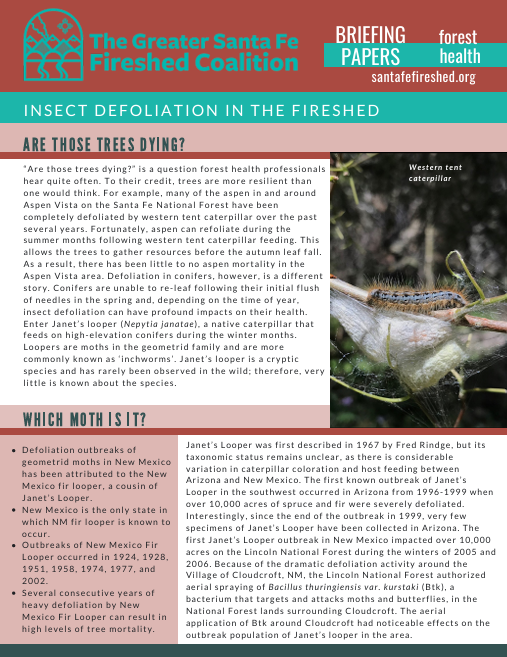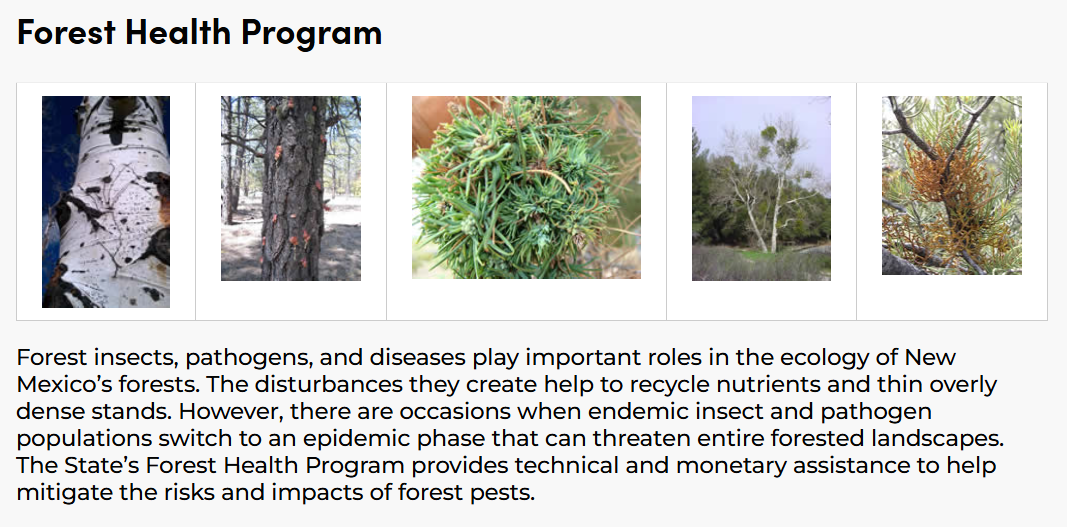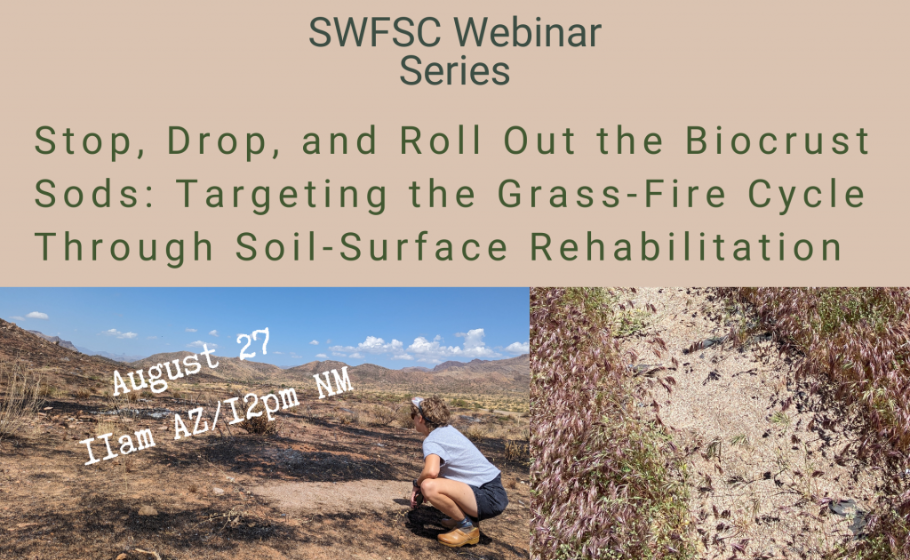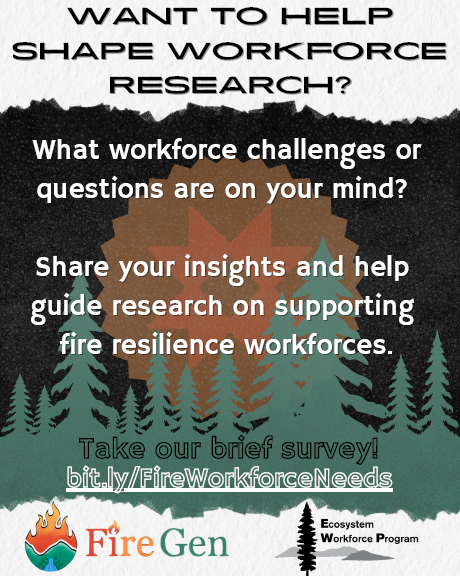With the recent rain, communities in the Sacramento Mountains that have been impacted by fires are now experiencing catastrophic flooding and tragic loss of life. Ruidoso Recovers, a resource from the Village of Ruidoso, helps residents stay informed during Ruidoso’s summer storm season. Check real-time road conditions, low-water crossings, and safety tips to help you stay safe. The Community Foundation of Southern New Mexico is also providing financial and logistical assistance to support the immediate and long-term needs of those impacted in Lincoln and Otero Counties; to learn more or donate, visit the Greatest Needs Impact Fund for Lincoln & Otero.
**This newsletter has been edited since first publicatoin to include resources for impacted communities**
Hello FAC readers,
Post-fire flooding, debris flows, and change in the type of vegetation on the landscape (also called ecotype conversion) are all well-known consequences of large fires - and challenges that persist for years. In the Southwest, we continue to learn how best to respond to these changes and threats to homes and people (see the NM After Wildfire or WA After the Fire guides for more details and resources). Today we will be focusing on resources for communities and recovery in the post-fire landscape.
This Wildfire Wednesday features:
Additional resources
Stay safe as the fire season ramps up,
Rachel
Assistance and Tools for Those Impacted by Flooding
Ruidoso Recovers
This website from the Village of Ruidoso provides vital resources and the latest updates as Ruidoso recovers from the South Fork and Salt fires and floods, including recovery resources such as recovery support, economic relief, and ongoing assistance and support.
…………………..
Stay informed - evacuation prep, insurance, and health and safety
Checklists: Flood Preparation and Supplies and Post-Fire Flooding Guide (excerpted from afterfirenm.org’s Floods Following Wildfire information guide)
Flood preparedness, insurance and safety information from the New Mexico Department of Homeland Security and Emergency Management (NMDHSEM)
Flood recovery, health and safety, and FEMA resources from the American Institute of Architects (AIA) https://www.aia.org/
…………………..
Post-wildfire response resources from the NM Environment Department
…………………..
What should people who live near a burn scar do to protect themselves from potential flash flooding and debris flows?
Know if you’re in a danger zone. A good rule of thumb is: "If you can look uphill from where you are and see a burnt-out area, you are at risk."
Have an evacuation/escape route planned that is least likely to be impacted by Flash Flooding or Debris Flows.
Have an Emergency Supply Kit (a “Go Kit”) ready and available.
Stay away from storm channels and arroyos (ditches are deadly, especially after a wildfire).
Keep a battery-powered radio to listen for emergency updates, reports of weather and flash flooding, and news reports.
Stay informed before and during any potential flooding event; know where to obtain National Weather Service (NWS) Outlooks, Watches and Warnings via the NWS Seattle website, FEMA App, American Red Cross Emergency Alert App, and via Facebook or Twitter.
Be alert if any storms develop over or near the burn scar. Do not wait for a warning to evacuate should heavy rain develop.
Call 911 if you are caught in a Flash Flood or Debris Flow.
Contact local officials for additional risk information and potential mitigation efforts.
…………………..
Help for those impacted - emergency relief funds
Several community foundations and emergency response funds are accepting donations and providing assistance to those impacted by the post-fire flooding from the Salt and South Fork Fires. Visit their websites to learn more and to donate.
Additional Resources
Tools and resources for students and educators
Learning about fire starts in childhood. As we grow, we come to understand that fire is dynamic, complex, and connected to many parts of our world including land management, climate, ecology, and communities. This new webpage from FACNM provides a collection of resources to help kids and students to understand science, history, and how human actions affect the environment - all through the lens of fire - as well as what actions can be taken to help protect the community from catastrophic wildfire. View the resource page for easy-to-use lessons, activities, and other helpful tools to guide learning in the classroom and beyond for teachers and students of all ages.
……………………………………
Job opportunity - Forest Stewards Youth Corps
The Forest Stewards Guild is hiring crew leads and crew members in Mountainair, Pueblo of Jemez, and Santa Fe, New Mexico! The Fall Forest Stewards Youth Corps (FSYC) program creates employment, education, and training opportunities for recent high school and college graduates (18-25). These crews are hosted and mentored by U.S. Forest Service ranger districts and Jemez Natural Resource Department.
FSYC prepares participants for careers in natural resource management by providing them with training and certifications in:
National Wildfire Coordinating Group (NWCG) Basic Wildland Fire Fighting (S-130/190)
Wildland fire chainsaw use (S-212)
CPR and first-aid
Defensive driving
Forestry
Natural resource management projects including trail building, wildlife habitat projects, range improvements, and others.
Leadership development
Job skills such as resume and cover letter writing.
Learn more and apply at www.foreststewardsguild.org/fsyc-fallfirefuels/
……………………………………
Forest health issues impacting the Southwest
Driving around New Mexico this spring and early summer, you may have noticed a lot of yellow-looking trees and recently green needles on the ground, especially among the Douglas fir. Tussock moth, a common defoliator, has been active this year and, along with other pests and diseases, can make live trees look dead. To learn more about insect defoliation, revisit this briefing paper from the Greater Santa Fe Fireshed Coalition.
The Energy, Minerals, and Natural Resources Department - Forestry Division also publishes an annual report on the state of forest health in New Mexico. Read past reports and view the forest health dashboard, learn about signs and symptoms of invasive insects, contact the state entomologist, and keep any eye out for the 2025 report here: www.emnrd.nm.gov/sfd/forest-health/
……………………………………
Upcoming webinars
Wednesday, August 27, 2025 at 12pm MT: Stop, Drop, and Roll Out the Biocrust Sods: Targeting the Grass-Fire Cycle Through Soil-Surface Rehabilitation
Biocrust sods (portable islands of lichens, mosses, cyanobacteria, and other organisms that form the cohesive soil communities known as biological soil crusts) are a novel technique for restoring critical soil systems in degraded landscapes. Because biocrusts can suppress the emergence of exotic plants, biocrust sods may also serve as living, ecologically beneficial fuel breaks in regions where the grass-fire cycle is driving more frequent fires. This presentation from the Southwest Fire Science Consortium will offer preliminary results from studies in the Sonoran and Mojave deserts, where researchers have been testing the capabilities of these new restoration tools.
……………………………………
Fire workforce survey
Help shape fire workforce research in this changing time!
The Ecosystem Workforce Program and FireGeneration Collaborative is researching and convening people around fire resilience workforces (e.g. wildfire response, land stewardship, community resilience). In light of changes from the ground up to the federal level, the Institute for Resilient Organizations, Communities, and Environments is asking workers, program leads, advocates, and scholars to share what questions and issues matter most to you right now.
Your responses will help guide the Institute’s work! While they will not be able to address everything, they will share an anonymous report of what they learn from this survey to all respondents, as well as an opt-in for project updates.
Please take 3-5 minutes to fill out this quick survey: bit.ly/FireWorkforceNeeds
For any questions or concerns, contact Annabelle Law from the research team at alaw@uoregon.edu.
